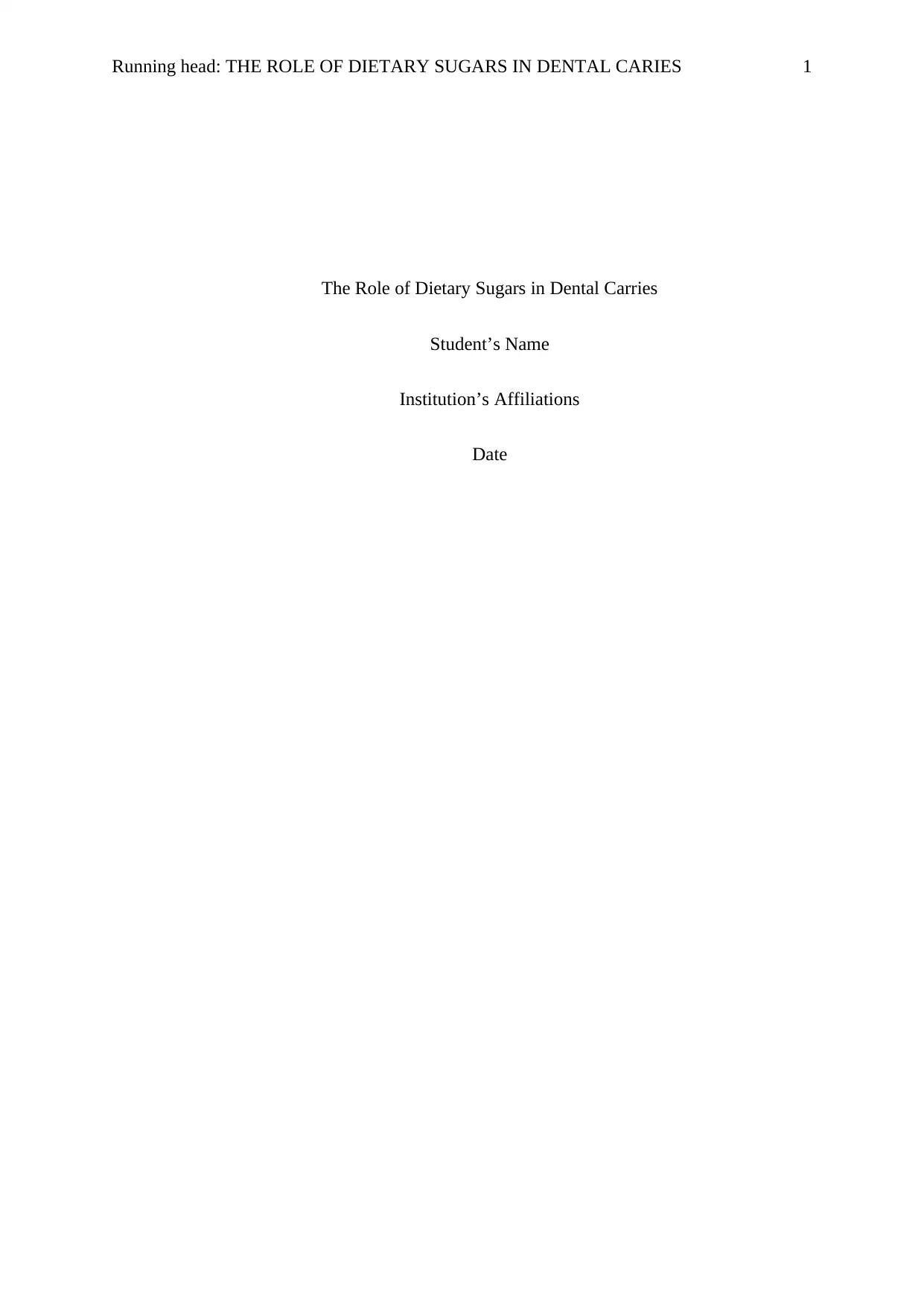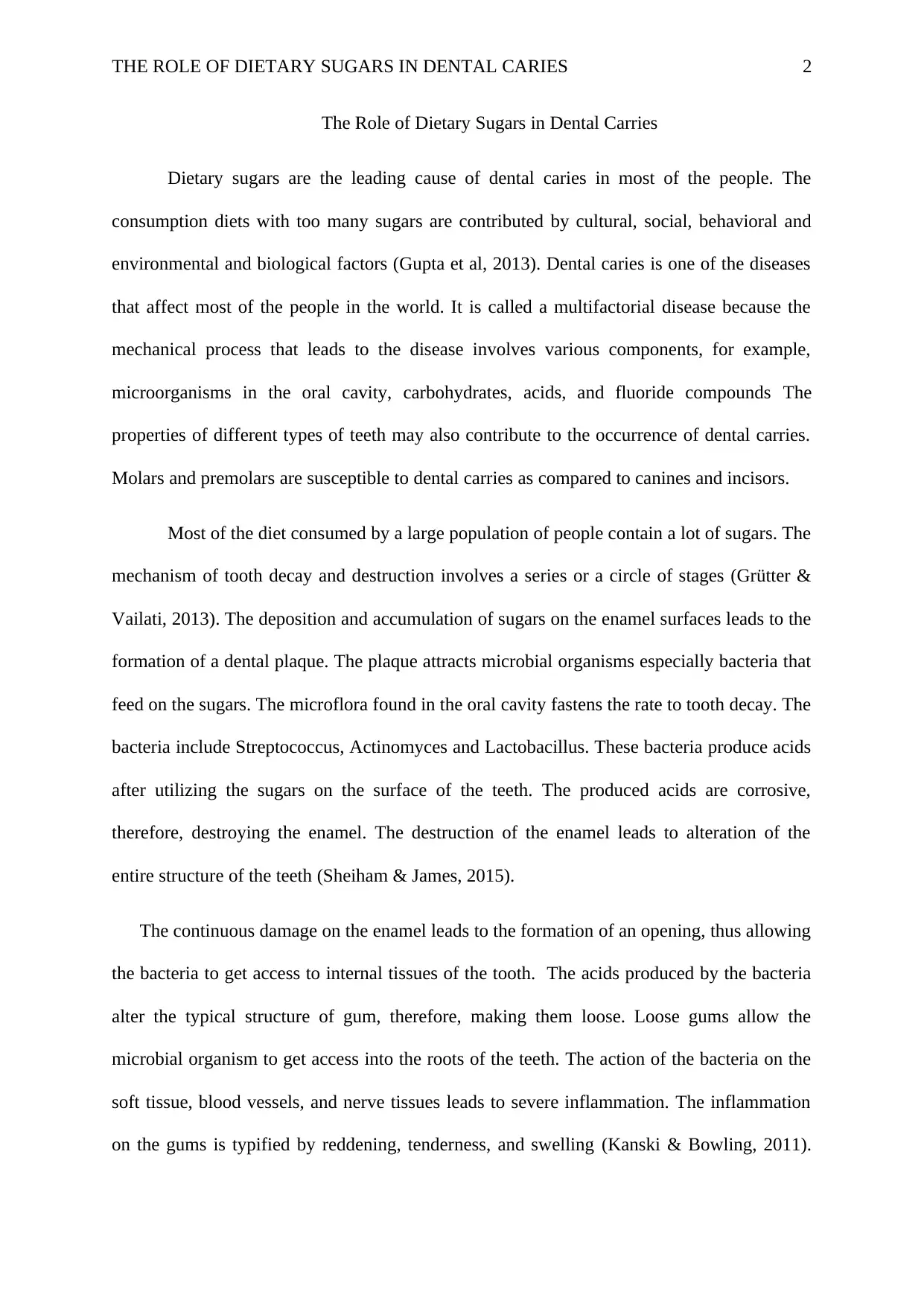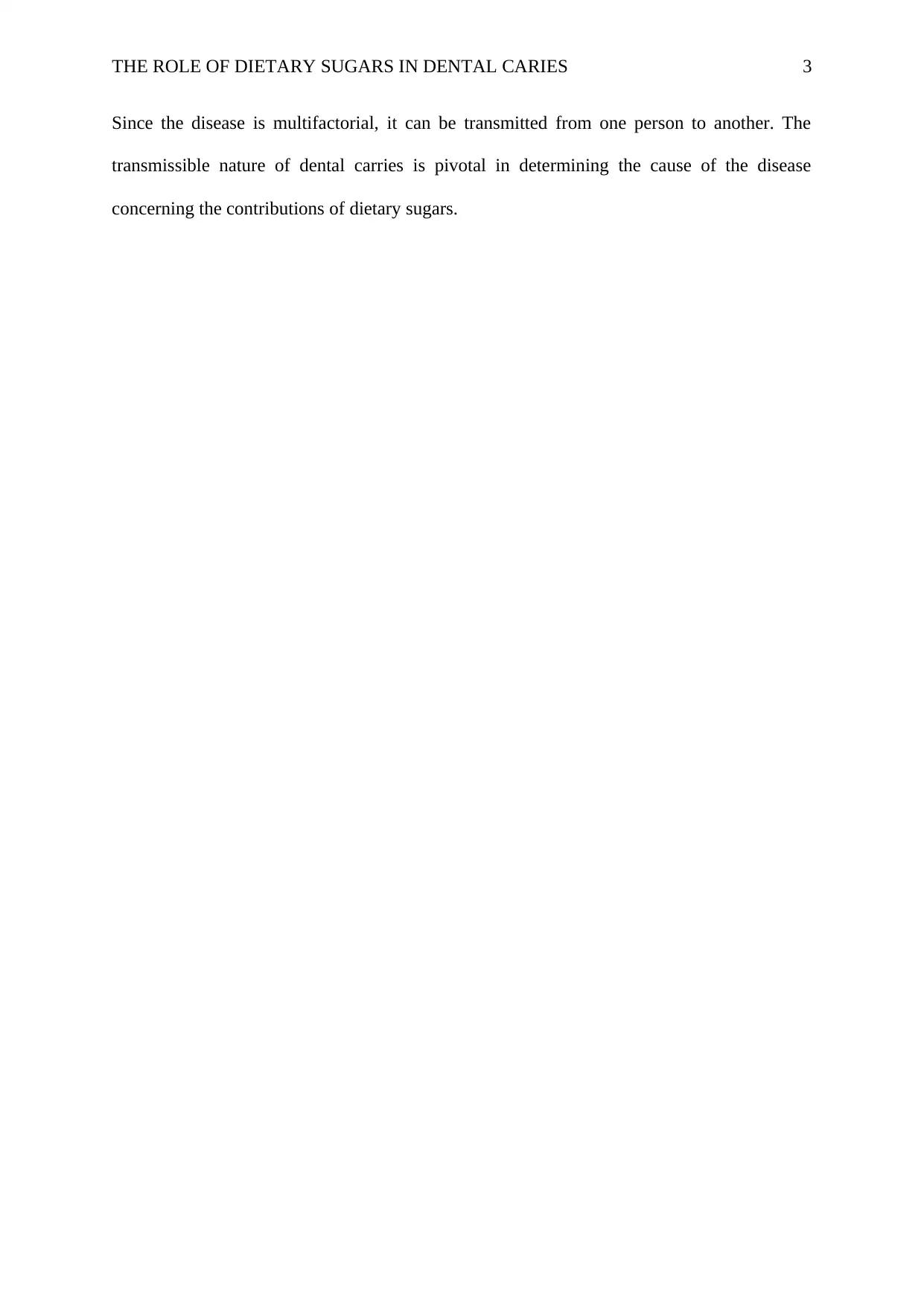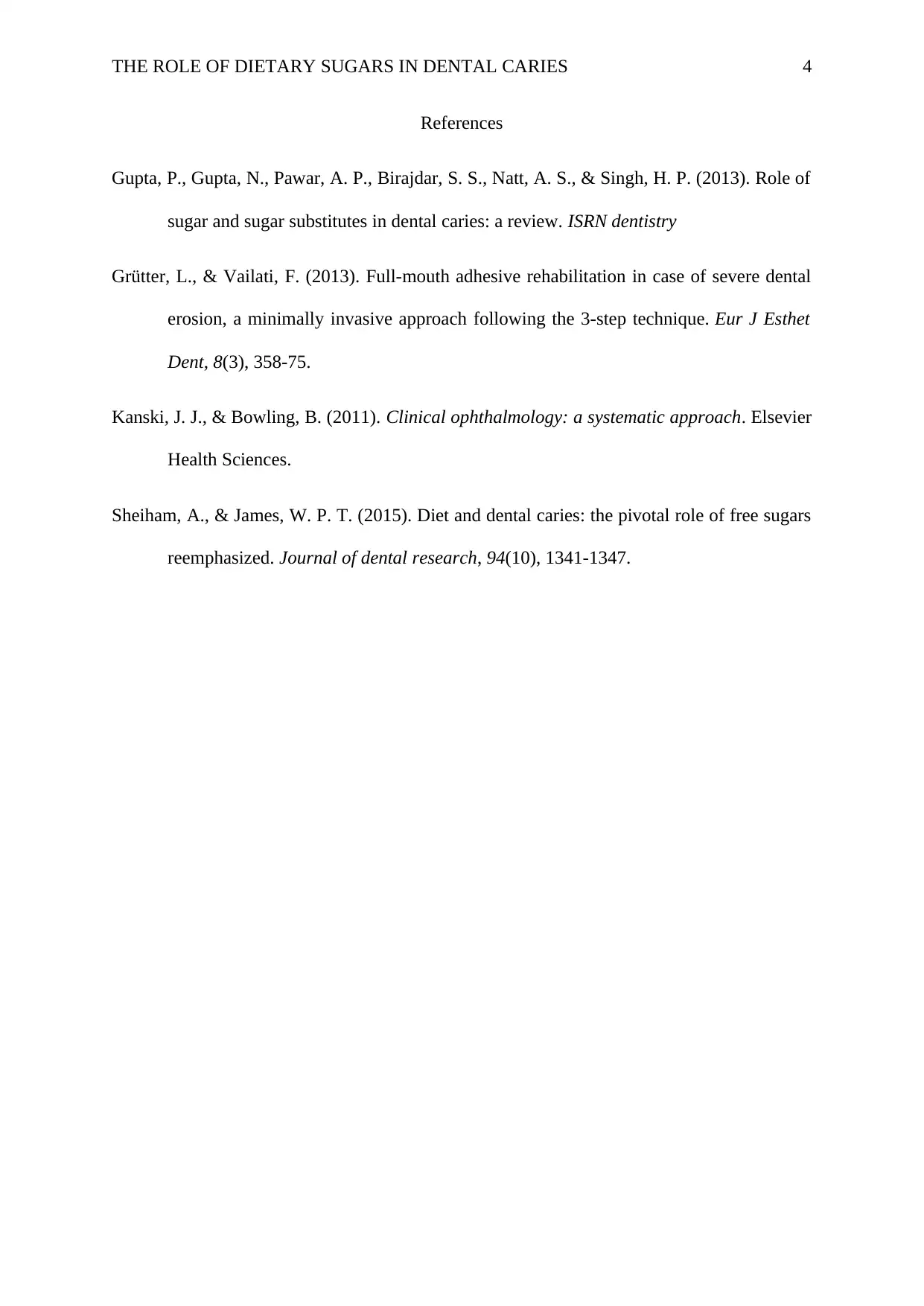The Impact of Dietary Sugars on Dental Caries: A Comprehensive Report
VerifiedAdded on 2022/12/30
|4
|635
|25
Report
AI Summary
This report explores the significant role of dietary sugars in the development of dental caries, a prevalent multifactorial disease. It begins by highlighting the contribution of dietary sugars to the formation of dental plaque, which attracts bacteria like Streptococcus, Actinomyces, and Lactobacillus. These bacteria metabolize sugars, producing corrosive acids that erode tooth enamel, leading to cavities and potentially affecting internal tooth structures, gums, and nerve tissues. The report emphasizes the transmissible nature of dental caries and underscores the importance of understanding the disease's etiology in relation to dietary sugar consumption. References to key research papers support the discussion of dental caries and the impact of dietary sugars.
1 out of 4











![[object Object]](/_next/static/media/star-bottom.7253800d.svg)